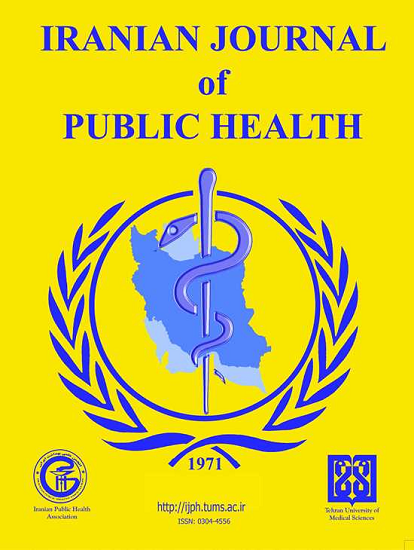The Future of Nosocomial Infections
Abstract
Nosocomial infections remain one of the most severe public health issues, infecting millions of patients worldwide each year. The global prevalence of nosocomial infections varies between 3.0% and 20.7%, with an incidence rate ranging from 5% to 10%. In this short article, we have tried to present a different perspective on the future of nosocomial infections from the author's viewpoint. According to our assessment, due to megatrends such as global exposure, population aging, and augmenting drug resistance, nosocomial infections are expected to become more severe in the future. On the other hand, advancements in health technologies such as e-health, Artificial Intelligence, the Internet of Things, and less invasive interventions form a new generation of hospitals capable of preventing and controlling nosocomial infections. Presenting novel approaches to nosocomial infection management will transform medicine. Therefore, it seems that in the following years, nosocomial infections will follow a different trend.
2. Ananda T, Modi A, Chakraborty I, et al (2022). Nosocomial infections and role of nanotechnology. Bioengineering (Basel), 9 (2):51.
3. Ling ML, Apisarnthanarak A, Madriaga G (2015). The burden of healthcare-associated infections in Southeast Asia: a systematic literature review and meta-analysis. Clin Infect Dis, 60 (11):1690-1699.
4. Alemu AY, Endalamaw A, Bayih WA (2020). The burden of healthcare-associated infection in Ethiopia: a systematic review and meta-analysis. Trop Med Health, 48:77.
5. Mitchell BG, Shaban RZ, MacBeth D, Wood C-J, Russo PL (2017). The burden of healthcare-associated infection in Australian hospitals: a systematic review of the literature. Infect Dis Health, 22 (3):117-128.
6. Patra JK, Das G, Fraceto LF, et al (2018). Nano based drug delivery systems: recent developments and future prospects. J J Nanobiotechnology, 16:71.
7. Mancuso G, Midiri A, Gerace E, Biondo C (2021). Bacterial antibiotic resistance: the most critical pathogens. Pathogens, 10 (10):1310.
8. Welte T (2013). Nosocomial infections–a present and future challenge. Dtsch Arztebl Int, 110 (38):625.
9. Khan HA, Ahmad A, Mehboob R (2015). Nosocomial infections and their control strategies. Asian Pac J Trop Biomed, 5 (7):509-514.
10. Khan HA, Baig FK, Mehboob R (2017). Nosocomial infections: Epidemiology, prevention, control and surveillance. Asia Pac J Trop Biomed, 7 (5):478-482.
11. Makabenta JMV, Nabawy A, Li C-H, Schmidt-Malan S, Patel R, Rotello VM (2021). Nanomaterial-based therapeutics for antibiotic-resistant bacterial infections. Nat Rev Microbiol, 19 (1):23-36.
12. Parcell BJ, Gillespie SH, Pettigrew KA, Holden MT (2021). Clinical perspectives in integrating whole-genome sequencing into the investigation of healthcare and public health outbreaks–hype or help? J Hosp Infect, 109:1-9.
13. Sherry NL, Gorrie CL, Kwong JC, Higgs C, Stuart RL, Marshall C, Ballard SA, Sait M, Korman TM, Slavin MA (2022). Multi-site implementation of whole genome sequencing for hospital infection control: A prospective genomic epidemiological analysis. Lancet Reg Health West Pac, 23: 100446.
14. Bokhary H, Pangesti KN, Rashid H, Abd El Ghany M, Hill-Cawthorne GA (2021). Travel-related antimicrobial resistance: a systematic review. Trop Med Infect Dis, 6 (1):11.
15. Wu X, Lu Y, Zhou S, Chen L, Xu B (2016). Impact of climate change on human infectious diseases: Empirical evidence and human adaptation. Environ Int, 86:14-23.
16. Cleland J (2013). World population growth; past, present and future. Environ Resource Econ, 55:543-554.
17. Liang SY, Mackowiak PA (2007). Infections in the elderly. Clin Geriatr Med, 23 (2):441-456.
18. Ozdemir K, Dizbay M (2015). Nosocomial infection and risk factors in elderly patients in intensive care units. J Microbiol Infect Dis, 5 (1):38-43.
19. Jamrozik E, Selgelid MJ (2020). Drug-resistant infection: Causes, consequences, and responses. Ethics and drug resistance: Collective Responsibility for Global Public Health:3-18.
20. Wicks P, Stamford J, Grootenhuis MA, Haverman L, Ahmed S (2014). Innovations in e-health. Qual Life Res, 23:195-203.
21. Thomas EJ, Lucke JF, Wueste L, Weavind L, Patel B (2009). Association of telemedicine for remote monitoring of intensive care patients with mortality, complications, and length of stay. JAMA, 302 (24):2671-2678.
22. Luo M, Feng Y, Wang T, Guan J (2018). Micro‐/nanorobots at work in active drug delivery. Adv Funct Mater, 28:1706100.
| Files | ||
| Issue | Vol 54 No 4 (2025) | |
| Section | Original Article(s) | |
| DOI | https://doi.org/10.18502/ijph.v54i4.18427 | |
| Keywords | ||
| Nosocomial infections Past Future Megatrends | ||
| Rights and permissions | |

|
This work is licensed under a Creative Commons Attribution-NonCommercial 4.0 International License. |





